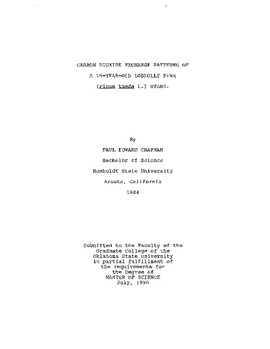| dc.description.abstract | In the Spring of 1989, a study was initiated to determine the effects of seasonal moisture stress, crown positions, and foliage age and flush classes on carbon exchange rates (CER) of a 15-year-old, Southeast Oklahoma loblolly pine stand. This stand has been maintained near a basal area of 11.5 m2;ha for the past three years. Diurnal trends in CER were measured at monthly intervals from April to November. These measurements were taken from the upper, middle, and lower one-third of the crowns of six trees. Within each crown position CER was measured on all age-flush classes of tissue. One plot, consisting of three pines, was equipped for irrigation during periods of summer moisture stress. The pines were never irrigated due to an unusually wet summer; therefore, the effects of seasonal moisture stress on CER was not determined. However, both crown position and age-flush class of tissue had significant effects on the observed CER. Over the growing season, rates of net photosynthesis (Pn) across all age classes of foliage in the middle crown position and lower crown position were 82% and 52%, respectively of that measured for the upper canopy branches. Comparison of CER linear regression models developed for foliage in each of the crown positions and 1 2 age-flush classesby month indicate that the majority of the differences measured in CER among the crown positions could be explained by the variation in light within the canopy. These models took into account vapor pressure deficit, xylem pressure potential, crown air temperature, and chlorophyll content. Both light variations from the tip of the branch to the interior part of the branch and differences in photosynthetic capacity of the tissue accounted for most of the observed differences in CER between age classes while differences in CER between flushes could usually be explained by light variations alone. The ability of light to explain the variations in CER between foliage location and phenology possibly depends on foliage maturity and the effects of subfreezing temperatures. | |
